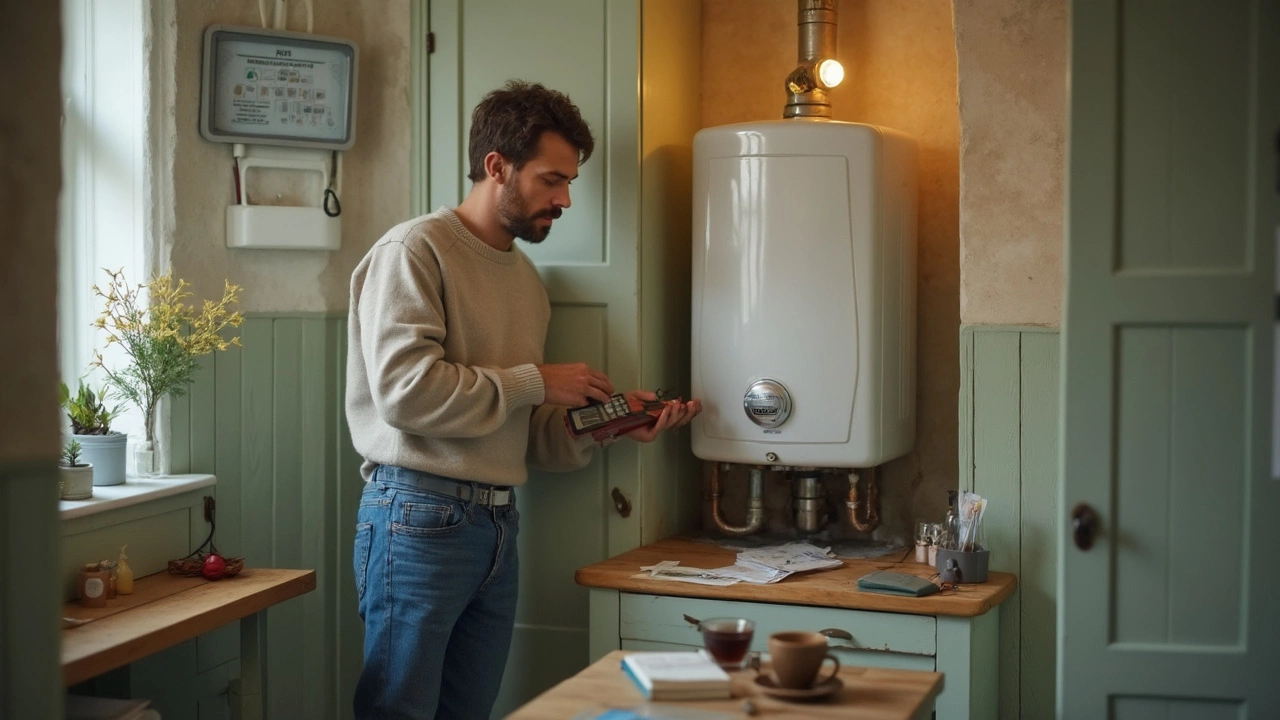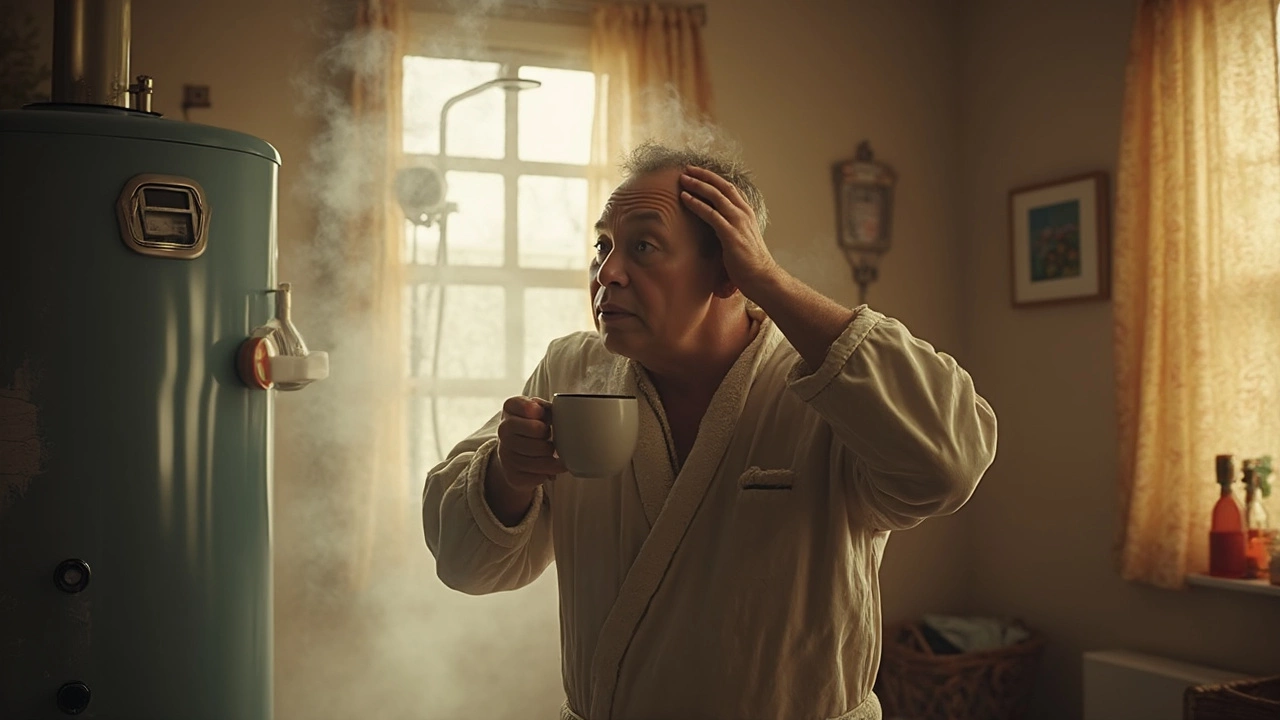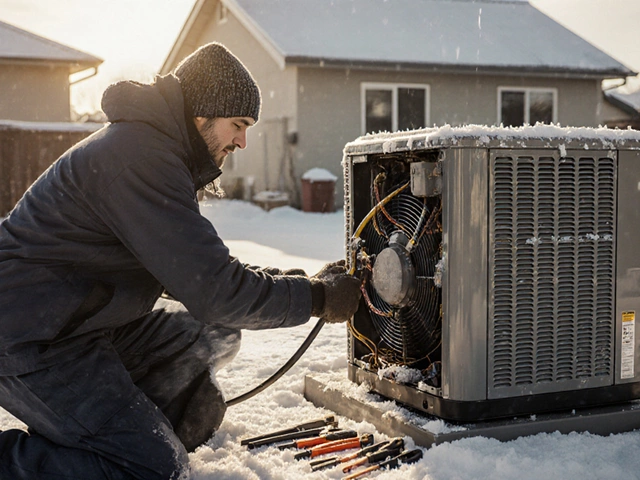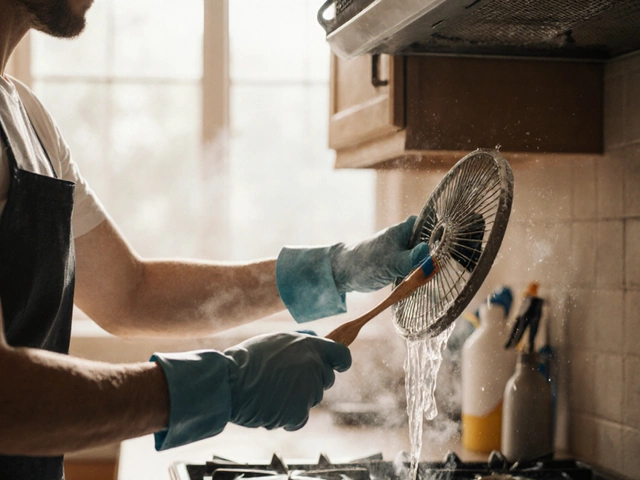Ever wondered why your showers are turning tepid faster than usual or why your energy bill seems to creep up month after month? It might not be an appliance going kaput; it could be your water heater begging for a good flush. Yes, it’s something you might be able to handle yourself without needing to call in the pros. Let's get real about why and how you should roll up your sleeves for this task. It's not just about the comfort of hot water on demand; it’s about keeping some extra dollars in your pocket.
The whole deal with flushing your water heater is that it helps get rid of mineral buildup. Trust me, this stuff accumulates fast and can be a real menace. Imagine the sediment as tiny rocks slowing things down, making your heater work extra hard, which leads to higher bills and might even cut your water heater’s lifespan short. Flushing it out isn’t just routine cleanup; it’s like a spa day for your water heater.
- Why Flush Your Water Heater?
- Safety First: Precautions
- Tools You’ll Need
- Step-by-Step Guide
- Common Mistakes to Avoid
- When to Call a Pro
Why Flush Your Water Heater?
Let’s get to the bottom of why you should take the time to flush your water heater. It’s not just something techy folks dreamt up—there are solid reasons behind it.
First off, sediment buildup. Your heater might look all shiny on the outside, but inside, it's playing host to minerals like calcium and magnesium. Left unchecked, this sediment can act like a pesky relative who refuses to leave—clogging pipes, chewing through your heater’s efficiency, and eventually leading to costly repairs.
What’s the big deal? Well, when your heater’s chugging along with all that extra gunk, it needs more energy to keep your showers warm. That’s right, the buildup could mean higher electricity or gas bills because your heater isn’t as efficient as it could be. We all like a good soak, but nobody likes a surprise on the utility bill.
Another perk of flushing? It can extend the life of your water heater. These things aren't exactly cheap, so squeezing out a few more years of service is a sweet deal. Regular flushes can fend off those unexpected breakdowns and ward off corrosion, keeping your heater running smoothly for longer.
Some cool data from a study on home maintenance showed that water heaters last 15-20% longer on average when regularly flushed. So, spending a bit of time here might save you major bucks on a new unit down the line. Remember, a healthy heater means a happy home.
Safety First: Precautions
Before you dive into the nitty-gritty of flushing your water heater, let's talk safety. Better safe than sorry, right? Water heaters, like any other household appliance, require a bit of caution to handle, especially since you're dealing with hot water and electricity. Let's break down the things you need to keep in mind.
First off, always turn off the power supply to the water heater. If it's electric, switch off the circuit breaker. Have a gas water heater? Turn the thermostat to the 'pilot' setting. This small step can prevent unwanted accidents and keep things from getting too heated—literally.
Draining the tank will involve dealing with hot water, so it's important to let the water cool down a bit first. Give it a few hours after switching off the power. While waiting might feel like watching paint dry, it's crucial. It's recommended to test the water temperature with caution before starting your work. Hot water can lead to serious burns.
"When performing any maintenance on a water heater, ensuring safety measures are strictly followed is essential to prevent injuries and equipment damage,” says Mark Hall, a professional plumber from Handy Homes Services.
And then there's the matter of the water valve. Make sure it's turned off before you start draining, unless you want an impromptu indoor water park. Once you’ve emptied the tank, verify that there’s no leftover pressure in the system by opening a hot water faucet—this lets excess air escape.
- Shut off power to the heater (electricity/gas)
- Let the water cool down
- Turn off the water valve
- Open a hot water faucet to release pressure
Slips, falls, or electrical issues can turn a simple DIY task into a headache. So, have those rubber gloves and safety goggles handy—prevention is your best friend.
Tools You’ll Need
Before you jump into the nuts and bolts of flushing your water heater, you’ll want to gather a few basic tools. Don’t worry—these are mostly things you probably have lying around in your garage or tool shed. But having everything on hand will definitely make the process smoother and avoid those annoying mid-job trips to the store.
Here’s your go-to list:
- Garden Hose: This is essential. You need a sturdy hose to attach to the drain valve of your heater to direct the flushed water safely outside or to a designated drain.
- Bucket: Keep a bucket handy for any excess water or sediment that might spill when you start draining. This will save you a mop-up job later.
- Adjustable Wrench: Perfect for loosening the drain valve. A crescent wrench can do the trick too.
- Screwdriver: You might need this to remove any screws or panels for accessing the heater, especially if it’s in a tight spot.
- Rubber Gloves: A pair of these will keep your hands clean and protected, as things can get a bit messy.
- Towels or Rags: Useful for drying up any small spills and wiping down the heater once you’re done.
- Shop Vac (Optional): If you’ve got one, it can be super handy for clearing out stubborn sediment if a regular drain isn't cutting it.
Pro tip: Before you start, make sure to turn off the power to your water heater at the circuit breaker if it's electric, or set it to pilot mode if it's gas-powered. This small step is crucial for safety and prevents any surprises.
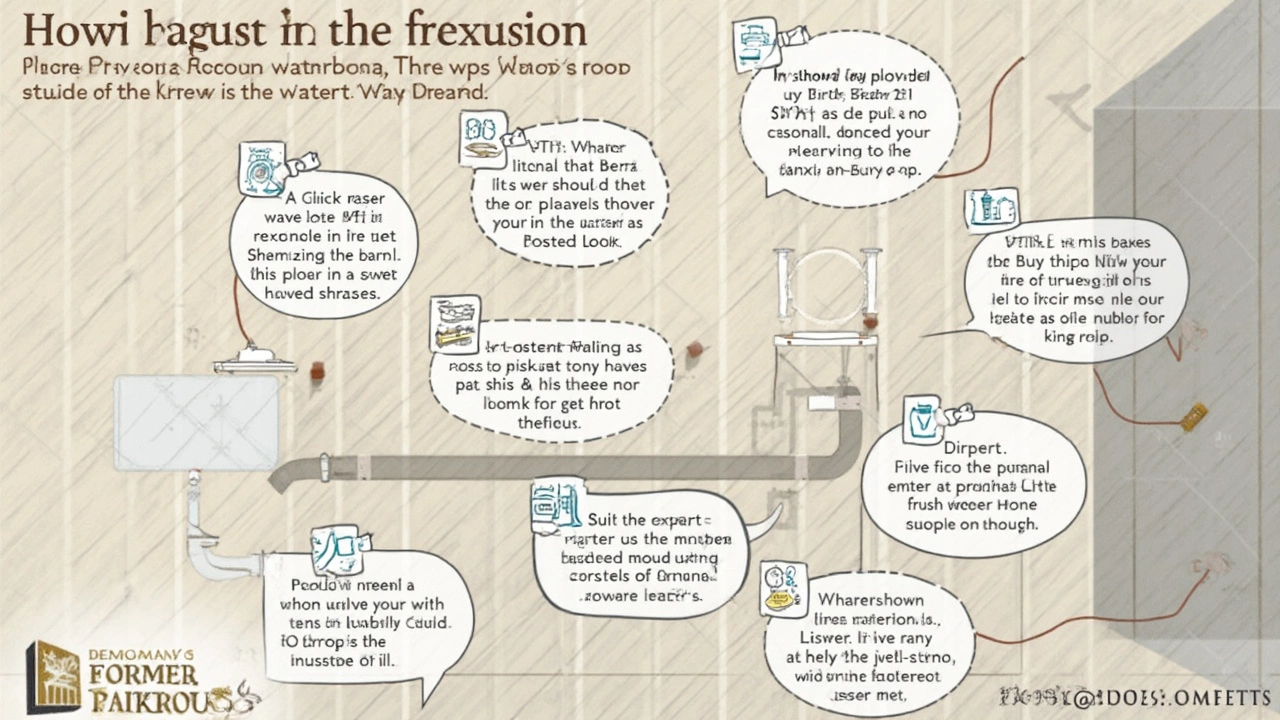
Step-by-Step Guide
Ready to give your water heater repair skills a go? Flushing out your water heater isn't as complicated as it sounds. Just follow this clear guide, and you'll have it done in no time. Remember, the goal here is to get rid of that pesky sediment that loves to build up.
- Turn Off the Power: If you’ve got an electric heater, switch off the power at the breaker. For a gas heater, set the thermostat to “pilot.” This is crucial for safety, so double-check!
- Shut Off the Water Supply: Locate the cold-water valve above the heater and twist it closed. You don't want new water rushing in while you're trying to flush it out.
- Attach a Hose to the Drain Valve: Screw a garden hose onto the drain valve located at the bottom of the heater. Make sure the other end of the hose is in a place where the hot water can safely drain, like a sink or outside your home.
- Drain the Tank: Open the drain valve to start letting the water out. Take your time with this, as the water is hot—don't rush it!
- Flush with New Water: With the drain still open, turn the cold-water valve back on to flush out any final sediment. Let it run until the water coming out is clear.
- Close the Valve and Refill: Once everything is clean and clear, close the drain valve and remove the hose. Then, turn the cold-water valve back on to refill the tank.
- Power Up: Turn the power back on if you have an electric heater or switch the gas back from “pilot” to “on.”
Here's a little pro tip: Some experts say you should flush your heater once a year. But if your area has hard water, you might want to do it twice to keep things running smoothly.
If your DIY water heater flush doesn't seem to clear out the sediment, or if you run into any issues, it might be time to reach out to a pro for some assistance. Better safe than sorry, right?
Common Mistakes to Avoid
Diving into the DIY realm with your water heater flush can be rewarding, but it's all too easy to trip up on some common mistakes. Let's break down what to sidestep so you don't end up with a cold shower or a flooded basement.
First off, skipping the power-off step is a rookie mistake. Always turn off the power to your electric water heater or switch the gas valve to pilot for gas models. This simple step is crucial for avoiding dangerous situations.
Another blunder folks make is not turning off the water supply. You'd think it's common sense, but in the rush to get started, it’s often overlooked. Shutting off the water prevents additional water from filling the tank during the flush, making the process effective.
Remembering to let the water cool down is something some folks forget. Jumping in too quickly means potentially scalding yourself and banging up the tank. Wait a few hours until the water is safe to handle.
Not flushing the system completely can leave sediment behind, defeating the whole purpose of the job. Be thorough—flush until the water runs clear. Other times, people forget to open a hot water faucet inside the house while draining. This helps prevent suction and speeds up the process.
When putting everything back together, it's crucial to ensure you completely close the drain valve before refilling. It's an easy spot to miss, which leads to leaks and wasted water.
Finally, not checking for leaks once the tank is refilled is a common oversight. It's essential to give everything a once-over to catch any little drips that could become big problems later.
Avoid these pitfalls, and you'll find that doing it yourself isn't as hard as it seems. Happy flushing!
When to Call a Pro
While handling a DIY water heater flush can be pretty straightforward, there are definitely times when getting a professional involved is the smart move. First up, if your water heater is showing signs of serious trouble, like leaking water or giving off strange smells, it’s best to call in the experts. These could be signs of bigger issues that need more than just a flush.
If you're hearing odd noises like popping or banging that don’t go away after you clear out the sediment, that’s another good reason to bring in a plumber. Persistent noise can indicate that the sediment has hardened, turning into a stubborn layer that might need professional tools to remove.
Not feeling up to it? Totally fine! There's no shame in preferring a pro when handling gas-powered heaters. These have the added complication of gas connections, which can be risky if you're not confident in your plumbing skills. Safety first, right?
For those with electric heaters, if the heating element is faulty or there's a wiring issue, a licensed electrician or professional plumber should handle it. Dealing with electric currents isn't something to mess around with.
And hey, if your heater is getting up there in age—like over a decade old—and it's making more weird noises than usual, it might be nearing its end. Sometimes a pro can give you the heads up if it’s time to save up for a new one, saving you from a cold surprise down the line. Here’s a handy stat: The Energy Saving Trust mentions that residential water heaters typically last 8 to 12 years, so if yours is in that range, a check-up from a pro might not be such a bad idea.
So, if ever in doubt or if things seem a bit over your head, don’t hesitate to call in a professional. No shame in knowing when to hand over the wrench!


